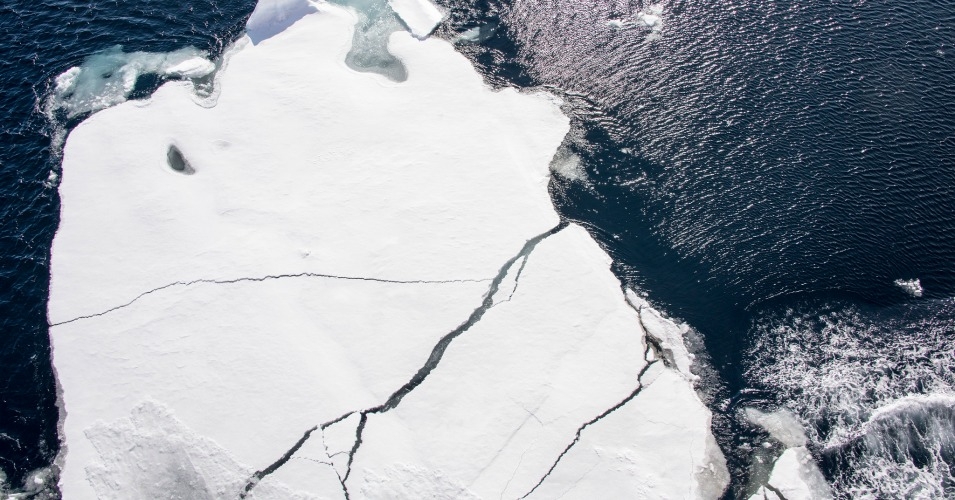
Shrinking sea cover means the Earth’s surface darkens, increasing absorption of the sun’s energy. (Photo: Christopher Mikel/flickr/cc)
Arctic sea ice plummeted to a record low in June, shrinking 56,900 square kilometers (22,000 square miles) per day last month, according to new figures from the National Snow & Ice Data Center.
June’s “sea ice extent” was 260,000 square kilometers (100,000 square miles) below the previous record low for the month, set in 2010—even dropping beneath the 1981-2010 long-term average.
As the Guardian notes, that means a vast expanse of ice the size of Texas has vanished over the past 30 years.
The Guardian writes:
Researchers did not go so far as to predict a new low for the entire 2016 season. But they said the ice pack over the Beaufort Sea was studded with newer, thinner ice, which is more vulnerable to melting. Ice cover along the Alaska coast was very thin, less than 0.5 meters (1.6 ft).
Apart from March, every month in 2016 has surpassed the record for retreating sea ice levels, as the year shapes up to be the hottest in documented history.
Scientists have also warned that the skyrocketing global temperatures mean Arctic ice will only continue to disappear. In early June, Cambridge University scientist Peter Wadhams told the Independent that the area could become virtually ice-free—that is, shrink to an expanse of less than one million square kilometers—by 2017 for the first time in 100,000 years.
“Arctic ice may well disappear, that is, have an area of less than one million square kilometers for September of this year,” he said at the time.
Retreating sea ice contributes to a feedback loop, scientists have explained, as the darker ocean is more exposed, thereby creating more warming and melting.
Jennifer Francis, a research professor at the Institute of Marine and Coastal Sciences at Rutgers University, told the Independent last month, “We are definitely looking at a very unusual situation up in the Arctic.”
“The ice is very low and there have been record-breaking low amounts of ice in January, February, March, April and now May, so this is very worrisome,” she said. “I think we are going to see perhaps a new record [in September], that’s very possible.”
This work is licensed under a Creative Commons Attribution-Share Alike 3.0 License
This article was first published in Commondreams.org














































